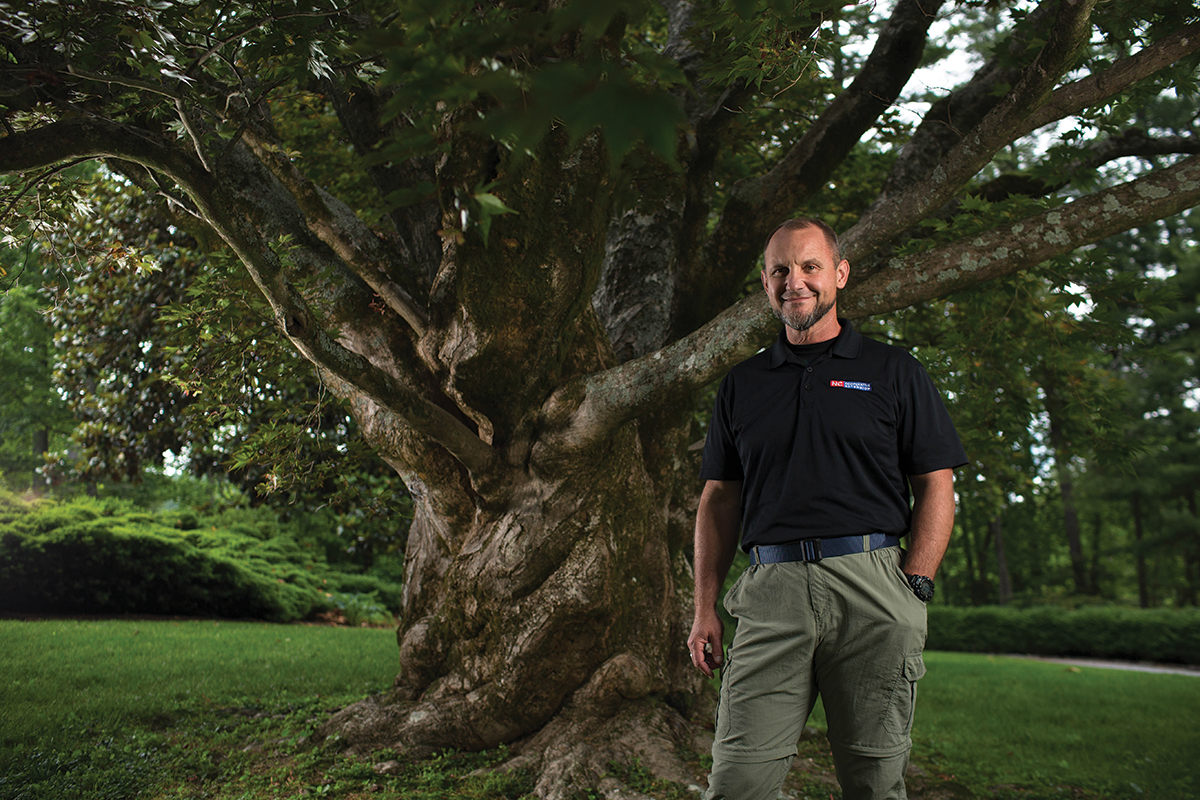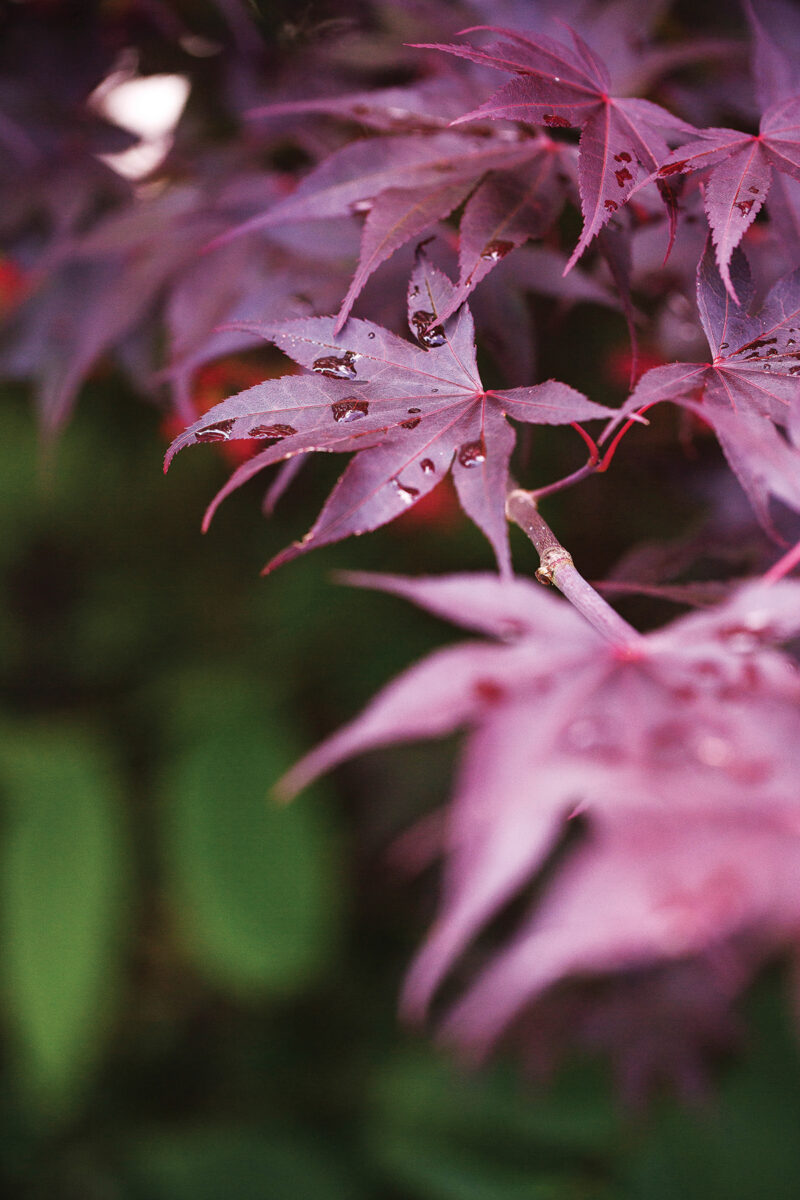Homeowners empowered with arboreal knowledge can help restore leaf canopy

Photo by Colby Rabon
“There are more trees in Henderson County today than in 1928,” says Steve Pettis.
And that sounds like a good thing.
In the early 1900s, decades of farming and clear-cutting for lumber had “denuded” Western North Carolina of its previously thick foliage, explains Pettis, Henderson County Extension Agent and host of the popular “Gardening in the Mountains” radio show on WTZQ.
But then, “as fewer people farmed, the land naturally reverted to trees,” he says. Other swaths of acreage were saved and replanted as the protected, pristine national forests that now exemplify the wild beauty of Western North Carolina.

Environmentally friendly landscaping is only the beginning of integrating trees meaningfully into one’s yard.
Photo by Colby Rabon
Nevertheless, Pettis cautions residents not to become overly optimistic. Today, over a century later, the area’s rampant development has created a situation where we are, once again, losing leaf canopy.
To help bring attention to the problem, Pettis will lead a discussion titled “The Secret Lives of Trees” at Bullington Gardens, a public botanical and educational garden located on 12 acres in rural Henderson County. (The facility is a partnership between the North Carolina Cooperative Extension and Henderson County Public Schools.)
Participants will learn what’s causing the decrease in the area’s tree canopy and what homeowners are able to do about it on their own. Commercial development contributes to stormwater runoff, which, in turn, can cause erosion. Also, damaging “heat islands” detrimental to trees are created when concrete and asphalt absorb and reflect the sun. And, says Pettis, valuable topsoil is often removed during construction, further hindering the ability of plants and trees to thrive.
As a result, he says, the average life of a contemporary landscape tree is only 25 years.

But he adds a degree of hope, and he hands it straight to local homeowners: “Single-family building can be done in such a way that saves trees and helps return the landscape to its original native state. I advocate for environmentally friendly landscaping.” The goal, he explains, is to use the most naturally occurring trees, shrubs, flowers, and grasses.
Caring for the trees one already has, especially older heritage trees, is equally important. Some folks might not realize, for instance, that overmulching their lawns and creating soil compaction by using heavy mowers can all contribute to a tree’s shortened life.
“My sincere hope is that attendees will begin to look at trees as more than inanimate objects, and to treat them with the respect and care they deserve. Trees are not lawn furniture — they are our partners in our mountain environment,” declares Pettis.
Care for your trees and they will take care for you, he suggests. Besides providing shade, cooling the air, storing carbon, and creating oxygen, trees help manage water levels and stabilize soil. Pettis will explain all of this at the August event.
But first: “They also provide peace of mind,” he reminds us.
“The Secret Lives of Trees” happens Thursday, Aug. 17, 2-4pm, at Bullington Gardens (95 Upper Red Oak Trail, Hendersonville). The program is $15 ($12 for Friends of Bullington Gardens). For more information, see bullingtongardens.org.
